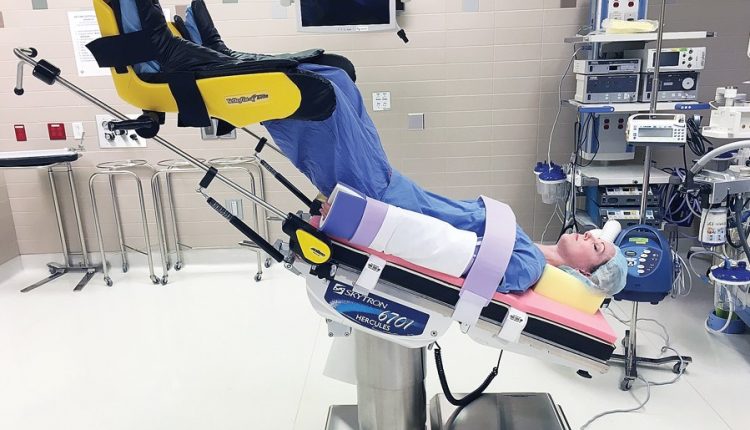
Trendelenburg position: when this patient management is relevant
The Trendelenburg position is essential in a variety of patient procedures. It is called “anti-shock” because it facilitates the perfusion of vital organs, but in reality it is also used in a whole series of surgical procedures
Placing patients in steep Trendelenburg is undoubtedly one of the most challenging positioning tasks facing OR personnel
As the number of robotic urological and gynecological procedures increases, the steep version of this position will be used more frequently in the future.
To prevent all-too-common issues like skin tears, pressure sores, and other complications associated with this gravity-defying, slip-inducing position, let’s take a look at what it takes to keep your patient as safe as possible whenever you tilt. head down.
At the end of the article it will be possible to deepen the uses in emergencies, as well as other positions useful to the patient.
Understand all the risk factors associated with the Trendelenburg position
The procedure must be performed in an absolutely appropriate way: you must be aware of the risks associated with the inclination of the patient, and how much this inclination can be supported.
If a procedure takes more than three hours, consider laying the patient flat for a few minutes to give their body a break from the physical stresses of the position.
Gravity increases intraocular and intracranial pressures and increases the risks of facial and airway edema.
Puffiness around the eyes should tell you that a problem is looming.
Another aspect is related to the weight situation of the patient: putting patients with a higher body mass index in Trendelenburg can also cause pressure on the chest, which could lead to ventilation difficulties.
The lithotomy-Trendelenburg position—supine with both legs apart, flexed, and supported by stirrups—can compress the lateral side of the legs, which could ultimately result in peroneal nevus injury.
Other potential complications associated with this position: injury to the obturator nerve, which causes pain in the inner thigh; injury to the sciatic nerve from excessive external rotation of the hips; and popliteal nerve injury, which can be caused by the stapes pressing on the back of the knee.
These are all aspects that must be taken into account both for the correct inclination and for the effects of time on this patient management.
There is a correlation between the amount of fluids surgeons want to administer and the degrees of Trendelenburg in which patients are positioned; the steeper the angle, the less fluids patients are typically given.
Low fluid levels could lead to acute renal failure, so it is important to strike the right balance between maximum exposure of the surgical field and sufficient fluid use.
As regards the emergency management of patients with, for example, hypotensive crises or in any case linked to a state of shock, we advise you to continue your knowledge with the articles below.
Read Also
Emergency Live Even More…Live: Download The New Free App Of Your Newspaper For IOS And Android
Trendelenburg (Anti-Shock) Position: What It Is And When It Is Recommended
The Ultimate Guide To The Trendelenburg Position
What Is The Trendelenburg Position And When Is It Essential?
5 Types Of First Aid Shocks (Symptoms And Treatment For Shock)
Cardiogenic Shock: Causes, Symptoms, Risks, Diagnosis, Treatment, Prognosis, Death
Hypovolemic Shock: What It Is, What Treatment For The Patient
Hypovolaemia: Causes, Symptoms, Diagnosis And Intervention
Kids With Sleep Apnea Into Teen Years Could Develop High Blood Pressure
Anaphylactic Shock: Symptoms And What To Do In First Aid
Burn Shock: Definition, Causes, Treatment In First Aid And Emergency
Stretchers In The UK: Which Are The Most Used?
Does The Recovery Position In First Aid Actually Work?
Reverse Trendelenburg Position: What It Is And When It Is Recommended
Stretcher: What Are The Most Used Types In Bangladesh?



